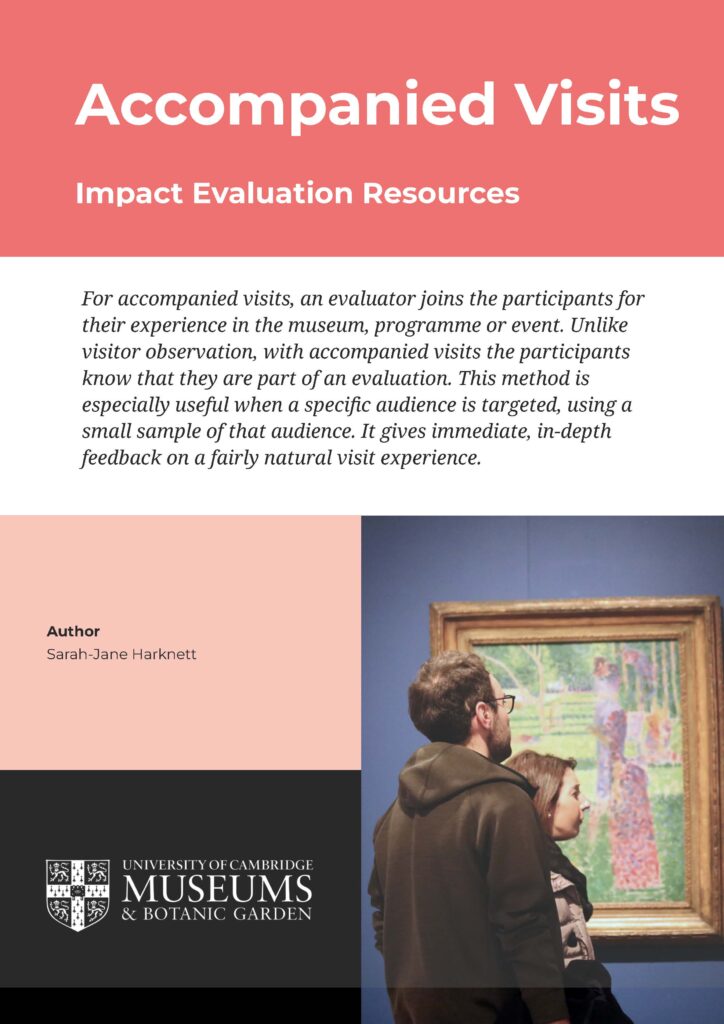Gain valuable insights by experiencing museums from the perspective of a visitor. This resource provides guidelines for effective evaluation through accompanied visits.
Accompanied visits offer an engaging way to experience exhibitions, events and programmes while gaining valuable feedback. Our Impact Evaluation Resource guides you through the whole process, from planning your evaluation through to what to do with the data.
In an accompanied visit, an evaluator joins participants to be part of their experience, whether that is looking round an exhibition, attending an event, talk or other programming, or going to a series of events, such as at a festival.
The evaluator tries to make the visit as normal as possible, so won’t guide the participants or provide a tour but will be led by the interests and ideas of the people attending. The participants direct the experience, the evaluator follows along to see the experience from their perspective. The participants know that they are being accompanied, so this might affect how they behave, but it is a useful evaluation method to give in-depth feedback from a specific audience.
Good planning is essential for successful accompanied visits and the earlier this starts, the better! You will need to think flexibly about almost everything when you are planning accompanied visits, so make sure this is the right method before you start. Work out who you would like to work with, and how they represent the target audience. It can take a long time to recruit participants, and you must make sure you are doing this ethically, so have the relevant paperwork in place before you start, especially when you are compensating the participants.
Your evaluators might be recording actions or making field notes as they follow the participants, and you could use digital or manual methods to do this. There is often a lot of data created, so allow plenty of time to analyse the results. To keep everyone safe, this method of evaluation should be carried out in public areas and will need to be fully risk assessed.
There are lots of things to think about when planning accompanied visits, especially around safety and ethics. Our resource includes a handy checklist to make sure you have thought everything through.
If you would like to learn more about carrying out your own accompanied visits, download our Impact Evaluation Resource, which includes information on how to do it, some basic ideas of what to do with the results, ethics, safety and security and a helpful list of further reading.
As always, feel free to get in touch with Kate Howlett, Research and Impact Evaluation Coordinator at the University of Cambridge Museums, if you have any questions, or would like any support or guidance on your own evaluation projects: info@museums.cam.ac.uk
How To: Accompanied Visits – Impact Evaluation Resource

